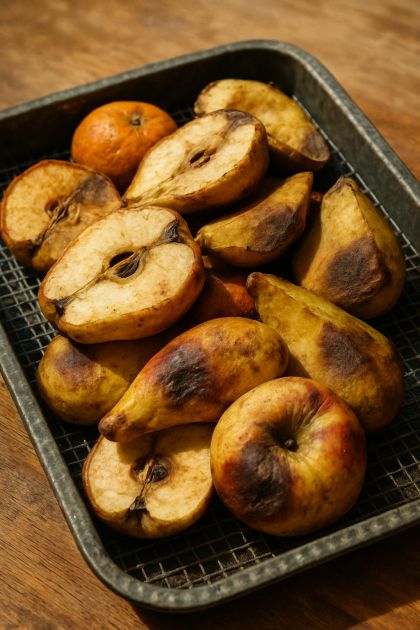2. Understanding the Risks of Consuming Old Fruit
Consuming old fruit can pose health risks, particularly if the fruit is moldy or has begun to ferment. Mold can produce mycotoxins, which are harmful compounds that can cause allergic reactions or respiratory issues. While not all molds are dangerous, it’s better to err on the side of caution and avoid consuming moldy fruit.
Fermented fruit can contain alcohol, which might not be suitable for everyone, especially children or those with certain health conditions. Additionally, bacteria can grow on fruit that has been stored improperly or for too long, leading to foodborne illnesses. It’s essential to be aware of these risks and prioritize safety when deciding whether to use old fruit.
3. The Importance of Food Safety
Food safety should always be a top priority when handling perishable items like fruit. The USDA recommends storing fruit at temperatures below 40°F (4°C) to slow the growth of bacteria and mold. It’s also important to wash fruit thoroughly before consumption, even if you plan to peel it, as bacteria can transfer from the skin to the flesh.
When in doubt, remember the adage: ‘When in doubt, throw it out.’ It’s better to waste a small amount of food than to risk your health. Keeping your kitchen clean and organized can also help prevent food from going bad in the first place, reducing the need to make these tough decisions.
4. Creative Ways to Use Overripe Fruit
If the fruit is still safe to eat but not in its prime condition, there are plenty of creative ways to use it. Overripe bananas, for example, are perfect for banana bread or smoothies. Apples that have softened can be cooked down into applesauce or used in pies.
Citrus fruits that are past their prime can be juiced and frozen in ice cube trays for later use in drinks or recipes. Berries can be turned into jams or compotes, while stone fruits like peaches and plums can be baked into crisps or cobblers. By thinking outside the box, you can reduce waste and enjoy delicious treats.
5. When to Trust Your Senses
Your senses are powerful tools in determining the edibility of food. Sight, smell, and touch can all provide valuable information about the condition of fruit. If something looks off, smells bad, or feels wrong, it’s best to trust your instincts and avoid consuming it.
However, it’s also important to recognize that some changes in fruit are natural and not necessarily harmful. For example, browning in bananas or avocados is a natural oxidation process and doesn’t mean the fruit is spoiled. Learning to distinguish between harmless changes and signs of spoilage can help you make informed decisions.
6. The Art of Food Preservation
Preserving fruit is an excellent way to extend its shelf life and reduce waste. Techniques like canning, freezing, and dehydrating can keep fruit edible for months. Canning involves sealing fruit in jars with a syrup or juice, while freezing requires cutting fruit into pieces and storing them in airtight containers.
Dehydrating fruit removes moisture, preventing the growth of bacteria and mold. This method is great for making snacks like dried apple rings or banana chips. By mastering these preservation techniques, you can enjoy your fruit long after its prime and minimize waste.
see next page
ADVERTISEMENT
ADVERTISEMENT

